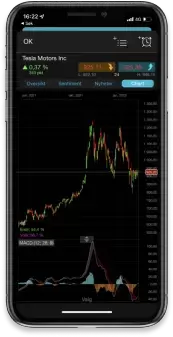Yesterday saw another negative session for markets in Europe, reversing all the modest rebound that we saw on Wednesday as well as a little more, with the FTSE 100 hitting a four-week low, and the DAX a three-week low.
The decision by the ECB to raise rates by 25bps was in line with expectations, with the euro slipping back after the ECB dropped the commitment to keep raising interest rates further, even as President Christine Lagarde’s asserted that the ECB had more to do, and that they had no intention of indicating a pause. Nonetheless the euro still slipped back from the highs of the day on what was perceived as a less aggressive stance from the ECB.
With the US Federal Reserve also softening its hawkish tone, there appears to be an increasing sense of caution among central banks that they are reaching the limits of what they can do without causing something to break. We’re already seeing those strains manifest themselves in the US banking sector, with Western Alliance Bancorp joining PacWest Bancorp in the fight to remain a going concern, as US markets finished lower for the fourth day in succession, and just off the lows.
There is a sense that this crisis has become a self-fulfilling prophecy of fear, with the market adopting a shoot first ask questions later mentality, which in turn is placing pressure on banks who don’t have a big business deposit base. Both Western Alliance and PacWest Bancorp have a deposit base of over 74% which falls under the FDIC’s $250k deposit guarantee scheme.
While markets continue to obsess about whether the rate-hiking cycle is over and stock markets slip back from their recent highs, the bond market appears to have made up its mind and that the Fed and the ECB are both done on the rates front. Of course, with unemployment still low in Europe, and the US, the economic data could still play a part in that narrative, starting today with the April US jobs report.
The March jobs report reset the bad data narrative of a slowing US economy that had driven US 2-year yields to a low of 3.65% in early April, with the March non-farm payroll numbers seeing 236,000 jobs added, while the unemployment rate fell to 3.5% even as the participation rate rose to 62.6%.
Since that data came out the US 2-year yield has been on a round trip to 4.28%, as markets struggle to price the timing of where the next move in rates is likely to come. One thing the March data did do was indicate that people are finally returning to the workforce as the cost of living continues to squeeze consumer finances, with labour force participation rising again for the fourth month in succession to 62.6%.
The JOLTs numbers earlier this week for March also saw a similar trend, falling to 9.6m, as more people returned to the workforce, having seen these numbers fall below 10m for the first time since May 2021 in February. The strong ADP report on Wednesday also pointed to resilience in hiring trends. Wages data did see a decline in March from 4.6% to 4.2%, however today’s April numbers are expected to remain unchanged. This week saw ISM services inflation tick higher while employment stayed just the right side of 50 at 50.8. This would point to another positive jobs report today, although payrolls estimates for today are a rather lowly 180,000, which would be the weakest number in three years.
Having seen the Federal Reserve hike by another 25bps rate hike earlier this, a strong number today would keep the prospect of another rate hike in June, although it would need to be a bumper number to do that. There is a school of thought after Wednesday that the Fed is now on pause, and the only real question is not whether we saw another hike, but when we see the first rate cut. A strong, or in line number today, along with next week’s April CPI, will shape the discussion here, but for now, even with the current banking turmoil, the timing of when the Fed starts cutting is likely to shape market direction from here on in.
EUR/USD – another failure just short of the 1.1100 area yesterday saw the euro slip back with a break above 1.1120 needed to signal further gains towards 1.1200. The bottom of the range remains at the 1.0940 level. Below 1.0940 retargets the 1.0870 level.
GBP/USD – pushed up to a new 11-month high at 1.2599 yesterday with key resistance remaining at the 1.2630 area. We need to see a move through 1.2630 or risk a return to the 1.2340 area.
EUR/GBP – slipped below the 0.8760 area yesterday, having failed at the 0.8840 area earlier in the week. We still have potential for further declines towards the 200-day SMA at 0.8730. A break above the 0.8870 area suggests a retest of the March peaks of 0.8925.
USD/JPY – this week’s brief push up to the 137.80 area, and above the 200-day SMA, feels like a classic bull trap, and which suggests we could see further losses. The failure to remain above 135.20, looks set to open up a move towards the 132.80 area, and the recent lows at 129.65.
Disclaimer: CMC Markets is an execution-only service provider. The material (whether or not it states any opinions) is for general information purposes only, and does not take into account your personal circumstances or objectives. Nothing in this material is (or should be considered to be) financial, investment or other advice on which reliance should be placed. No opinion given in the material constitutes a recommendation by CMC Markets or the author that any particular investment, security, transaction or investment strategy is suitable for any specific person. The material has not been prepared in accordance with legal requirements designed to promote the independence of investment research. Although we are not specifically prevented from dealing before providing this material, we do not seek to take advantage of the material prior to its dissemination.







